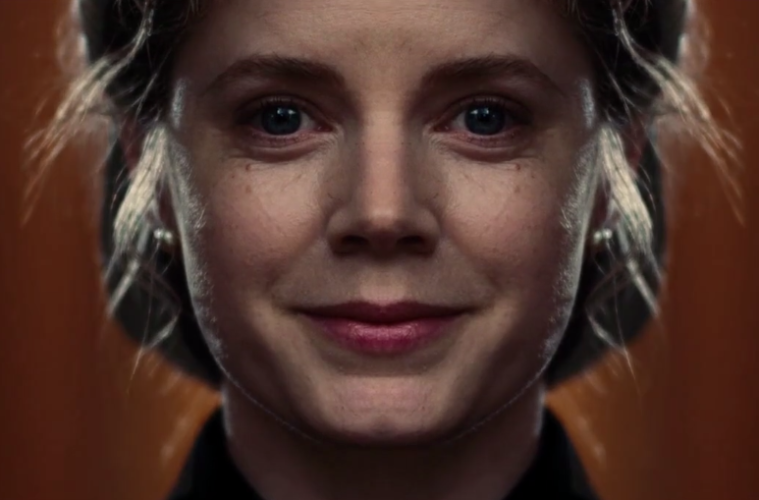
Dailies is a round-up of essential film writing, news bits, and other highlights from across the Internet. If you’d like to submit a piece for consideration, get in touch with us in the comments below or on Twitter at @TheFilmStage.
Watch a video exploring the Rorshach test visuals of The Master:
Paul Thomas Anderson’s The Master has a unique visual presence that can be rather difficult to fully identify. A visual motif seems to be characters framed dead-center, or straight lines creating a “folding-point” down the middle of the frame. In this video, I chose several instances from the film with such symmetry and then mirrored half the frame, using the exact center as the flipping point. Due to Anderson’s use of symmetry, the results are reminiscent of a Rorschach test–half the frame serving as the ink and the middle of the frame serving as the fold. Once folded over, the “ink” creates an exact mirrored image of itself, birthing an entirely new picture. “Tell me what you see.”
Read the late Gilberto Perez‘s Criterion essay for A Day in the Country:
“When painters went out to the countryside round Paris in the 1870s,” wrote the art historian T. J. Clark, “they would have known they were choosing, or accepting, a place it was easy (almost conventional) to find a bit absurd.” A bit absurd because this wasn’t really the country but more like the illusion of it, a place where city dwellers would dip their toes in nature on their day off. Yet the impressionist painters cherished the excursionist’s landscape, the visitor’s gladdening moment of light and greenery, open air and rippling water. Claude Monet and Pierre-Auguste Renoir created a pastoral of the Sunday outing, not of the landed gentry but of ordinary people enjoying a break. We get a critical view of such an excursion, however, in Guy de Maupassant’s story “Une partie de campagne” (1881). A petit bourgeois Parisian family—father, mother, daughter, old grandmother, and a pale apprentice in the family’s hardware business expected to marry the daughter—goes out in a borrowed milkman’s cart for a Sunday in the country, during which both the mother and the daughter have amorous encounters with local young men.
Preview Wes Anderson‘s original storyboard animations for The Grand Budapest Hotel:
Salon reports there were fewer female protagonists in 2014 than there were in 2002:
Whatever you might feel about the aesthetic or political merits of the upcoming “Fifty Shades of Grey” movie, at least it’s a woman’s story. That fact is more significant than you’d think. While a handful of very visible female-centric movies, like “Gone Girl” and “Mockingjay” made a big splash at the box office last year, the situation for women onscreen is actually more dire than ever. A study conducted by San Diego State’s Center for the Study of Women in Television and Film analyzed 2,300 characters in the year’s highest grossing domestic films to discover that, of the top grossing films of 2014, women were protagonists only 12% of the time. The figures have dropped three percentage points from 2013 and four percentage points from 2002, when the highest grossing film with a female protagonist was “My Big Fat Greek Wedding,” starring Nia Vardalos, at the number five spot.
Film School Rejects‘ Scott Beggs asks if you should support Jupiter Ascending just because it’s original sci-fi:
It’s possibly the end of original sci-fi filmmaking at Warner Bros. At least it’s easy to imagine it might be. With the lackluster box office showing for Edge of Tomorrow, the even more lackluster box office showing for Transcendence and now the likely belly flop of Jupiter Ascending, it will probably take a brave soul at the studio to speak up on behalf of an untested (read: not adapted) piece of sci-fi filmmaking, especially if it’s an entire universe that demands more than a hundred million dollars to be built.

